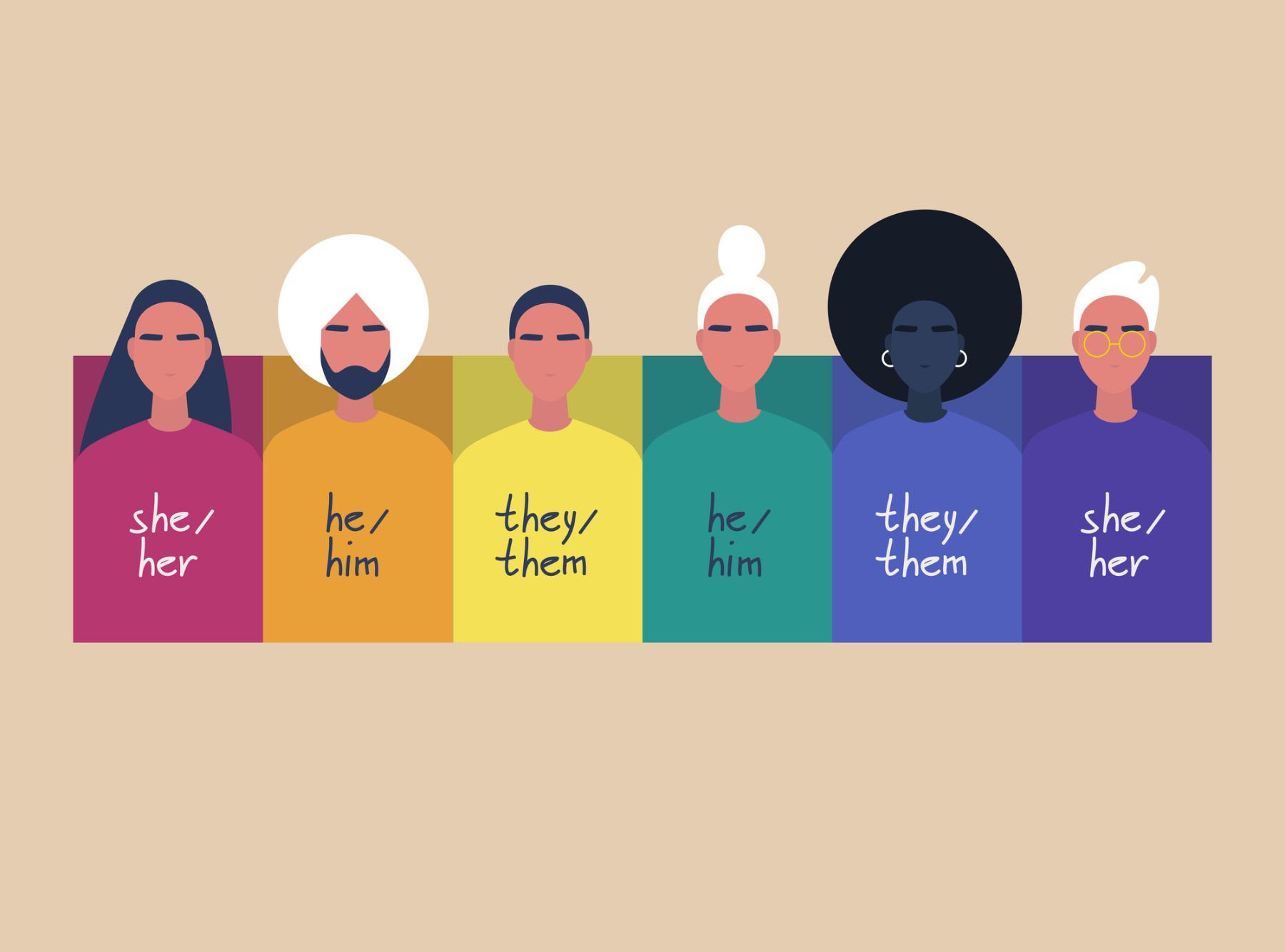The importance and inclusivity of pronouns is becoming very prevalent in today’s society. According to npr.org’s “A Guide to Gender Identity Terms” by Laurel Wamsley, a pronoun is “how we identify ourselves apart from our name. It’s how someone refers to you in conversation.” Being aware of the pronouns that someone uses is the easiest way to show that you accept and respect them for who they are.
The most important thing to remember is that how someone looks has nothing to do with their gender identity; that is why it is so important to be aware and ask. There are over seventy (70) gender pronouns and some of the most commonly used are: she/her, he/him, they/them, she/they, and he/they. “They” can be used for someone you do not know or for someone you do know who prefers to steer clear of gender specific pronouns.
In order to make others aware of your pronouns you can include them in your social media bios and email signatures. On sites like Instagram, Facebook, LinkedIn, and Twitter, there is an option to put your pronouns in your public bio by going to “edit profile” and then selecting what pronouns you use. By doing this, your pronouns will be seen by anyone who views your profile, not just people who follow you. You can also include your pronouns on email signatures by putting them under or next to your name. If you would like to include your pronouns on your virtual meeting signature as well, put them in parenthesis next to the name that shows on your image.
It may be uncomfortable to speak to someone about what pronouns they use, so below are some tips on how to make it easier:
- If you do not know someone’s pronouns- ask! (Some people may not feel comfortable or safe announcing their pronouns in public so be patient.)
- Offer your pronouns first to lead the way for others.
- One-on-One: “Hello, my name is Hali and I go by she/her pronouns”
- In meetings: “Hello everyone. My name is Hali, I am an intern and I go by she/her pronouns.” Or include them in your profile name on virtual meetings.
- In emails: Include your pronouns in your signature to make others aware.
- Make it a part of your routine to ask and offer pronouns when introducing yourself.
- If you make a mistake, it is okay! Just apologize and move on.
- It is very hard to legally change one’s name, so the name on IDs may not match the name that someone goes by.
Following these tips can mean the world to someone who faces challenges every day for simply being who they were meant to be. Below are some longer articles that contain glossaries of gender identity terms and some more information about how to be more aware.

